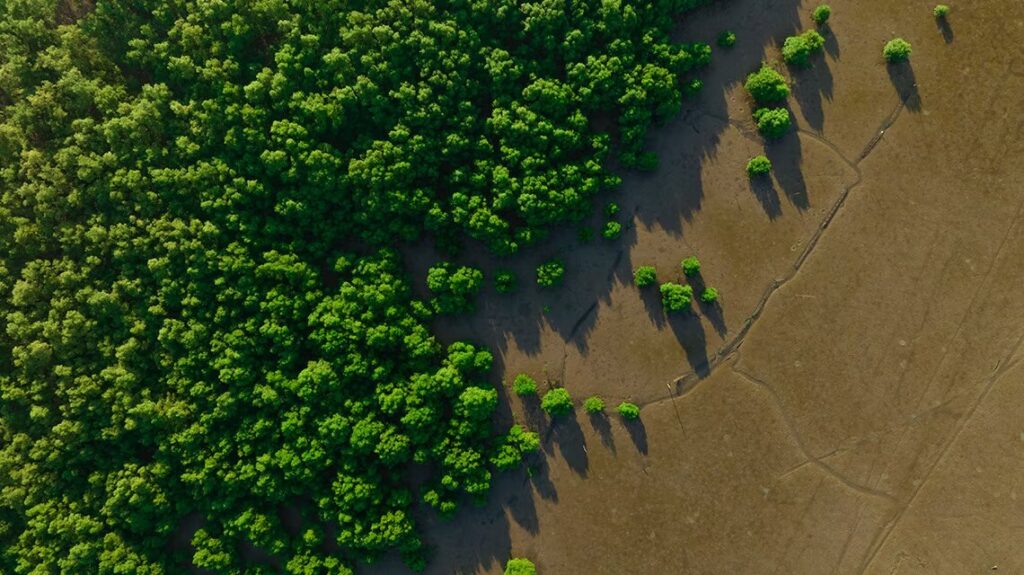According to the International Energy Agencyemissions, in 2022, humans emitted 36,800 tons of carbon dioxide to generate energy, down 0.9% from 2021, but six countries stand out as beacons of hope in the goal of achieving the carbon neutrality by 2050 and thus prevent the global warming does not exceed the 1.5 °C line with respect to the average temperatures of the 19th century.
John Langproject leader of Net Zero Tracker Energy & Climate Intelligence Unit (ECIU), a non-profit organization that analyzes the mitigation plans of countries and companies around the world, explains that there is no verification process or clear methodology to measure whether they are truly carbon neutral, but they assess three elements: the balance of emissions accounted for by the UN, the emissions declared in the Nationally Determined Contributions and the presence of significant carbon absorption resources and to what extent they are permanent or not.
According to ECIU's analysis, Bhutan, Comoros, Benin, Gabon, Cambodia y Guyana are considered carbon neutral o "net zero" and this is how they are doing it.
Forest protection and renewable energy in Bhutan
Nestled in the Himalayan mountain range, the small kingdom of Bhutan is, in many cases, a global exception. It does not measure its development in terms of gross domestic product (GDP) like most of the world's economies, but rather in terms of gross domestic happiness (GHG). In this way, it has managed to prioritize objectives that are not merely economic and to abandon activities that contribute to environmental and social unsustainability in exchange for growing the economy.
Even so, Bhutan is so dependent on the fossil fuels like most countries in the world. However, its extensive forestswhich cover almost three quarters of the territory (and of which 40% are protected), are an immense carbon sink which allows it to more than compensate for its CO2 emissions and others greenhouse gases. In addition, most of its energy is generated from renewable sources, mainly hydroelectric dams.
Low GHG emissions in Comoros
Comoros has not followed a special path to reach the carbon neutrality. Although it is true that it has protected a large part of its forestsThis archipelago in the Indian Ocean is one of the poorest countries in the world (25% of the population lives in extreme poverty) and consumption of goods and resources is very low.
Its economy depends largely on subsistence agriculture, livestock and fishing, activities that generate hardly any greenhouse gas emissions.
Natural carbon sinks in Benin
This small, densely populated country in the Gulf of Guinea also claims to have achieved the carbon neutrality thanks, above all, to its natural CO2 sinks (its forests). However, the development of its economy, based on the cultivation and export of cotton and cashew nuts, compromises its net zero status in the long term.
"Having reached the target does not free you from having a neutrality strategy for the future," says John Lang. "In the long term, you can grow population, increase consumption or deforest forests, there's nothing to guarantee that you maintain that neutrality," he explains.
Forest protection in Gabon
This African country is almost 90% covered by the dense forests of the Congo River Basin, the second largest in the world. carbon store the most important river on the planet after the Amazon.
In its latest NDC, the country has also committed itself to protect its forests to continue to be a greenhouse gas sink long-term. But, at the same time, Gabon is the fourth largest oil and gas producer in sub-Saharan Africa. The fossil fuels account for 39 % of its GDP.
Forest protection and reforestation of degraded areas in Cambodia
Cambodia has a very detailed strategy for maintaining the carbon neutrality and secure it definitively in the middle of the century.
Its major challenges are to protect its abundant forests and reforest degraded areas while continuing to develop its economy and transform its energy sector, which currently relies heavily on burning coal.
Guyana, a natural carbon sink and emission reduction plan
A large part of South America is covered by dense forestsbut in almost no country do they reach the level of extension and density of the forests of Guyana.
In addition to being an important carbon sinkThe country has a plan to reduce its emissions by 70% by 2030 and is publicly advocating the elimination of subsidies for fuels such as oil and gas. fossil fuels and the establishment of an international carbon tax.
However, since 2019, its oil extraction and export activities have not stopped growing, with the result that its "net zero" title is also in question in the long term.
What countries need to do to achieve neutrality
The six countries mentioned above all have in common that they are natural carbon sinks and/or are low-emission economiescharacteristics that most countries do not have.
Therefore, John Lang that in order to achieve the goal of reaching the carbon neutrality by 2050, it is necessary for countries to establish a credible action plan for the decarbonization of the economy or abandon the fossil fuels.
"This involves establishing a commitment to well-defined and measurable emission reduction and offset targets," he says.
For countries that claim to have achieved carbon neutralityThe company's management, he says, it is crucial that they have an decarbonization plan Lang explains.
For the rest of the world's countries, the great lesson they can draw from the neutral countries is the importance of taking care of the forests and the natural resourcesbecause they are large carbon stores.
Source: BBVA


